Printer-friendly .pdf version of this page.
Introduction
Cucurbit downy mildew is a devastating disease in central and eastern United States as well as globally. Cucurbit downy mildew can cause severe losses. It is caused by Pseudoperonospora cubensis, which is an oomycete pathogen, otherwise known as a water mold. It has a wide host range as the pathogen can infect over 60 different hosts, including cucurbits such as cantaloupe, cucumber, watermelon, squash, and pumpkin. Symptoms of the disease include a characteristic mosaic pattern of chlorosis and necrosis found on the upper surfaces of leaves. Substantial losses in yield occur if appropriate management strategies are not in place.
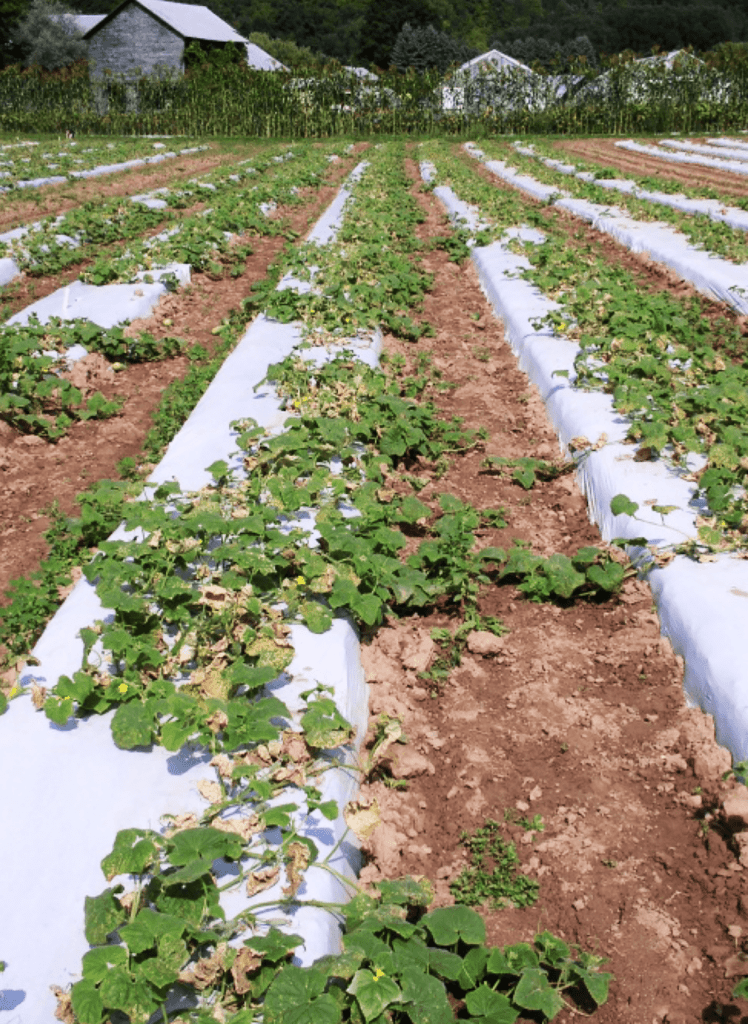
Causal Agent
The cucurbit downy mildew pathogen P. cubensis results in defoliation, poor plant health, and significantly reduced fruit yields due to sun scald, reduced nutrition, and secondary rots. Downy mildew is a water mold and an obligate parasite. It requires a living host to survive. As a result, the asexual sporangia are unable to remain viable over long periods of time. This prevents the sporangia from overwintering in the frost-prone northern states. It should be noted however, that spores can survive 1-2 weeks and they are dispersed by wind, which facilitates the survival of the cucurbit downy mildew pathogen in states with warmer winters or in greenhouses.
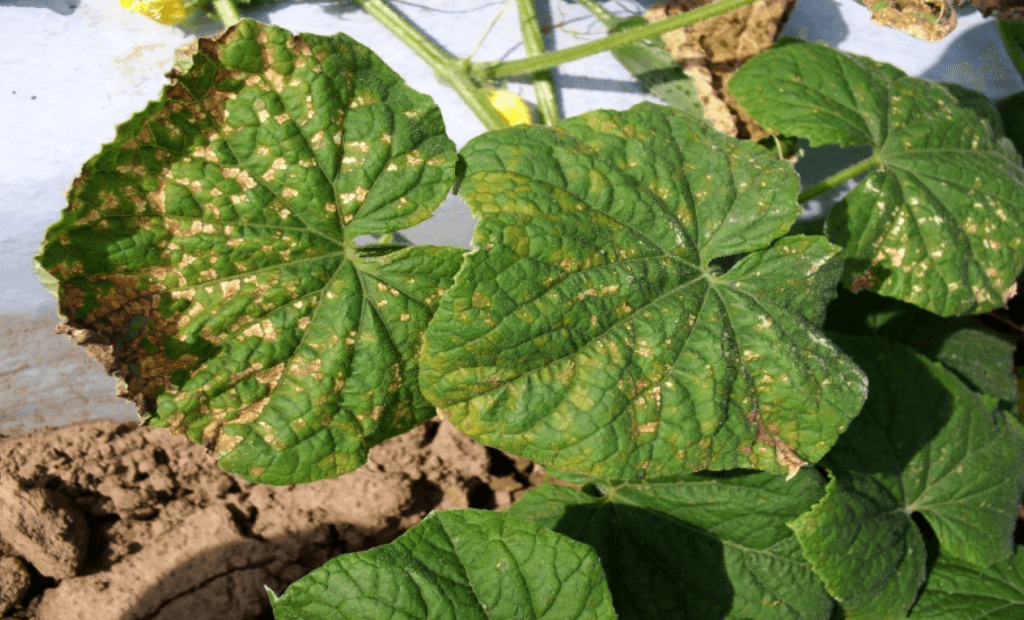
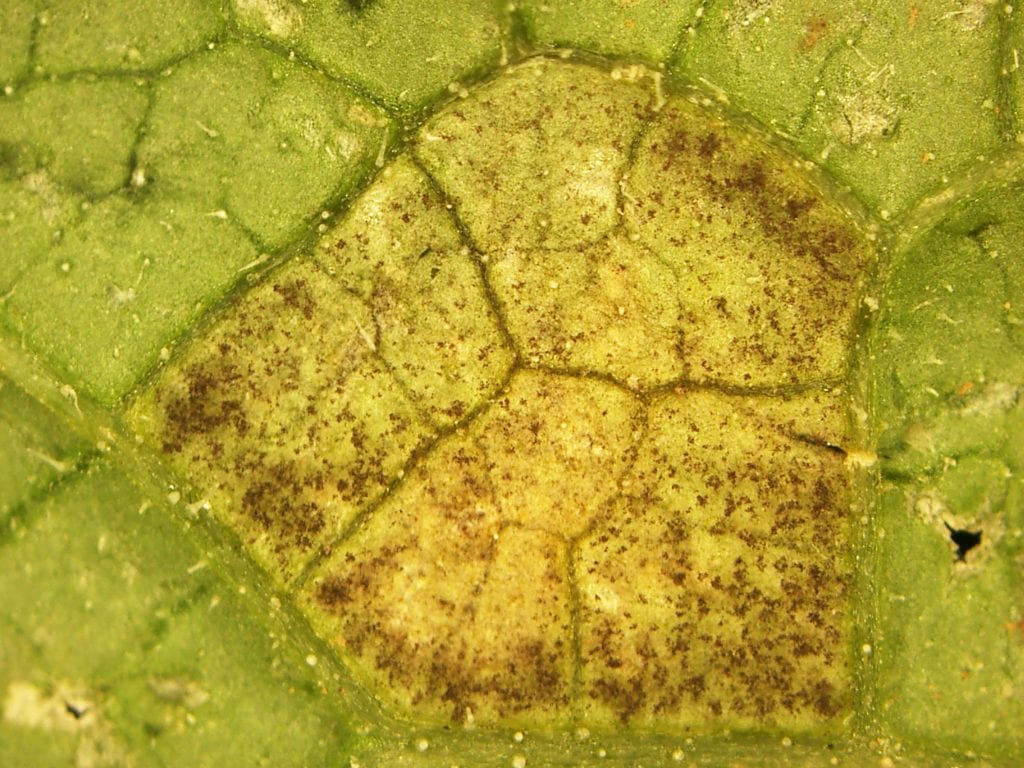
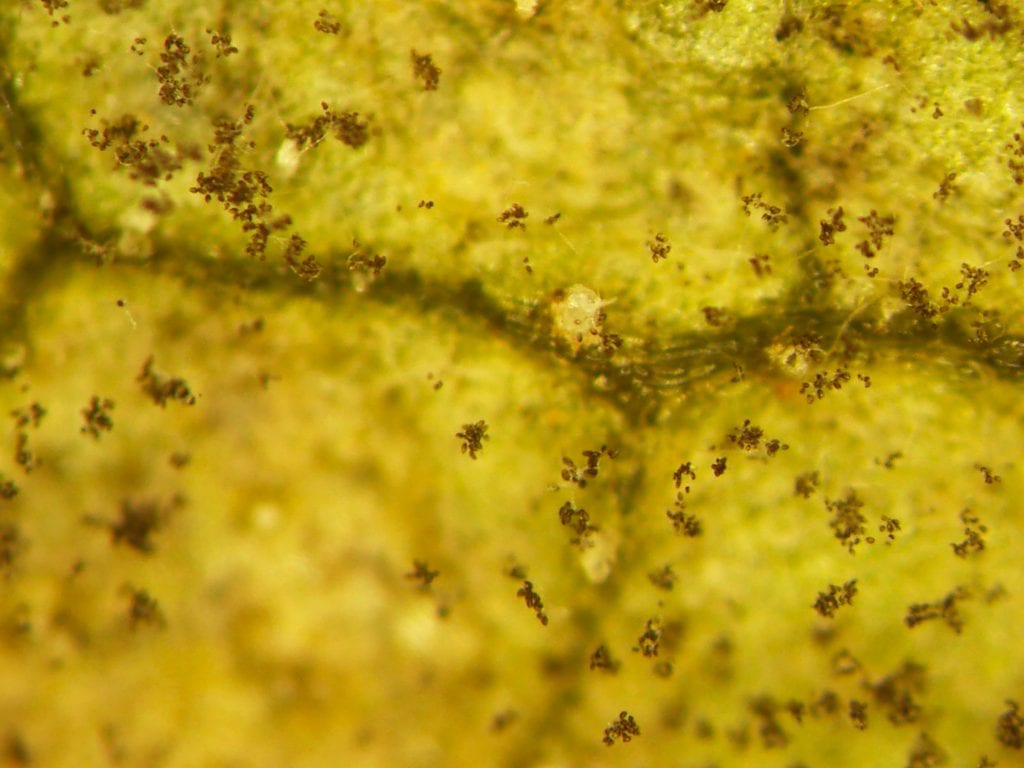
Symptoms
Cucurbit downy mildew is easily recognized by its characteristic mosaic pattern of chlorosis and necrosis (dead cells) on the upper surfaces of cucurbit leaves, but leaf symptoms vary between cucurbit species. The name ‘downy’ is attributed to the development of gray spores called sporangia that result in a fuzzy or downy appearance on lesions located on the underside of leaves. Powdery mildew is a common fungal disease that is also found on cucurbit leaves. Signs include a white ‘powder’ that covers the upper leaf surfaces. Often, both diseases can be seen simultaneously.
How the pathogen spreads
P. cubensis is an airborne pathogen. Under correct environmental conditions (i.e. high humidity/rainfall) thousands of sporangia develop, which then disperse in wind currents and can be transported hundreds of miles. The pathogen can travel from the southern United States in the spring, moving up the coast reaching New York by August. The pathogen may also arrive from greenhouses that have winter cucurbit production.
The spores are only viable for 1-16 days depending upon environmental conditions. However, with favorable conditions (i.e. wet leaf surfaces and temperatures between 40-80 ᵒF), the sporangia will release 2-15 swimming spores (zoospores) that invade the host plant. Symptoms become evident 4-12 days after the zoospores infect the leaf. Unfortunately, downy mildew is wind dispersed, making it impossible to quarantine infected fields.
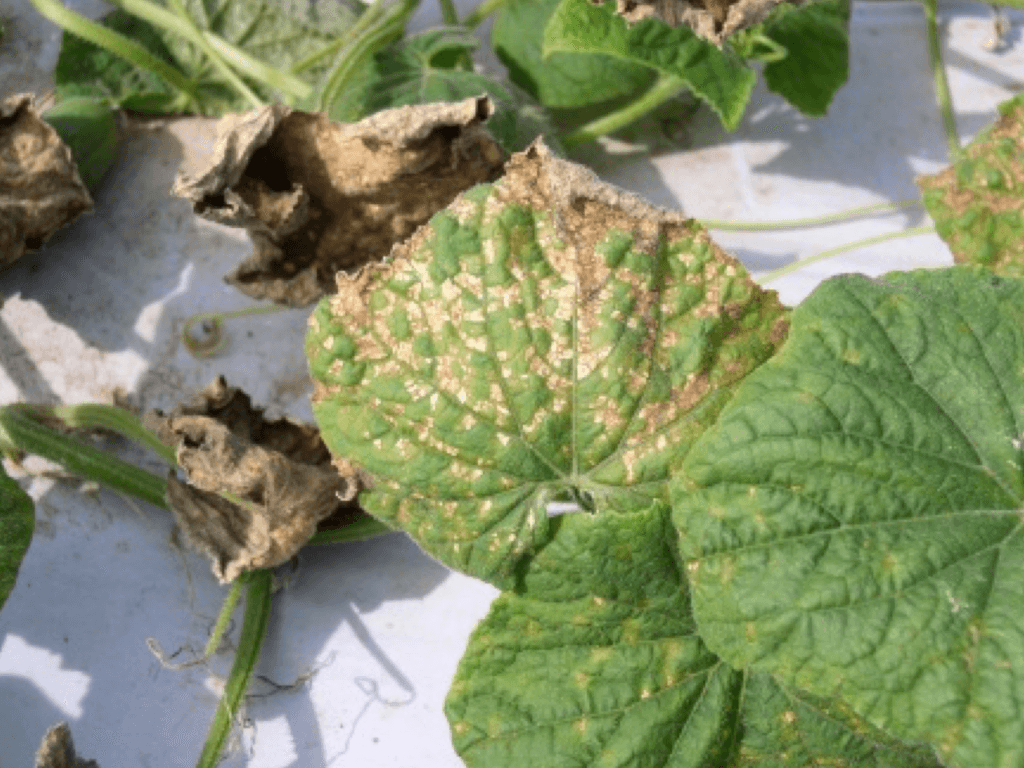
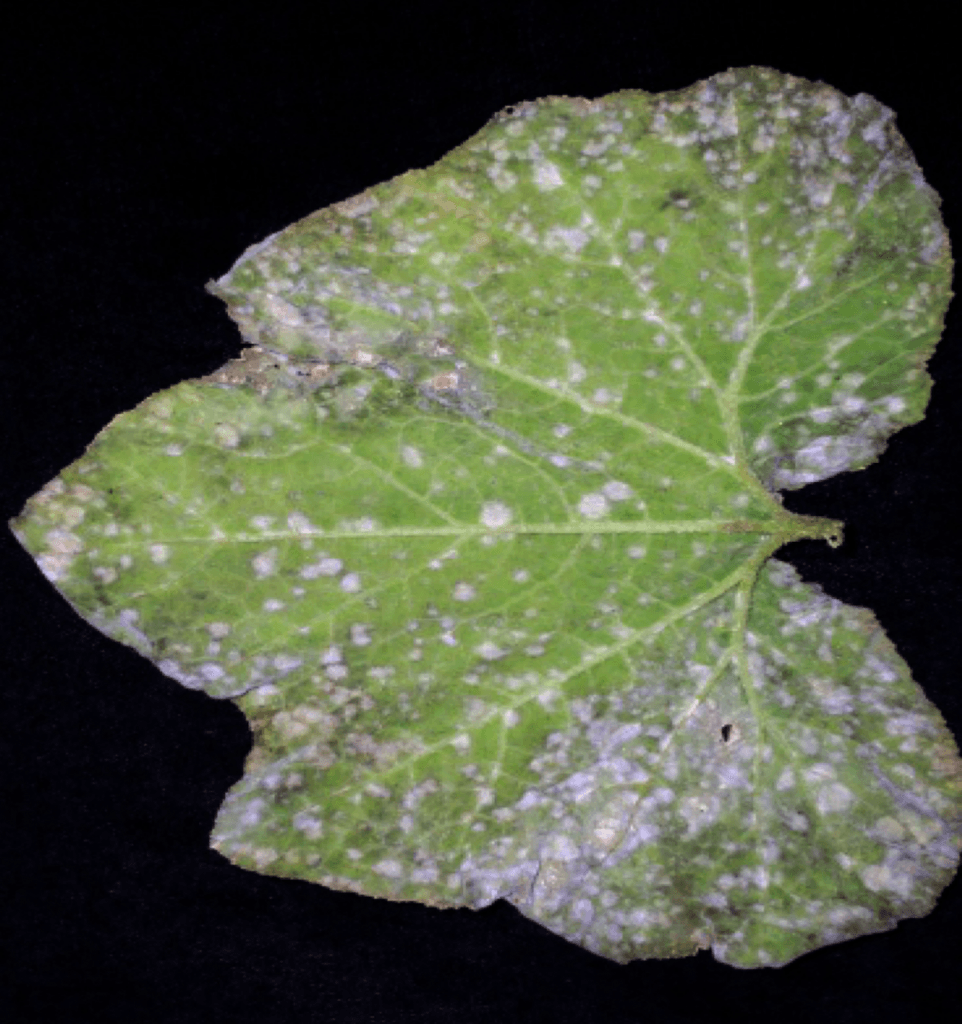
Management
Take preemptive measures to limit the spread of cucurbit downy mildew:
- Early planting: Downy mildew occurs annually, arriving in New York between July 4 and August 31. Try to plant as early as possible so fruit can be harvested before the pathogen arrives.
- Planting resistant cultivars: Newer cucumber varieties that have some resistance to cucurbit downy mildew are commercially available.
- Remaining vigilant: It is possible to track the spread of cucurbit downy mildew through the Integrated Pest Management Pest Information Platform for Extension and Education (ipmPIPE) at cdm.ipmpipe.org. Following the spread of the pathogen and knowing when it’s nearby will allow for more effective fungicide
- Applying chemical treatments: : Check the Cornell Integrated Crop and Pest Management Guidelines for Vegetable Crops for current recommendations.
More information
- For more information, please contact: Chris Smart – cds14@cornell.edu
- This page was created by Martha Sudermann – mas835@cornell.edu


